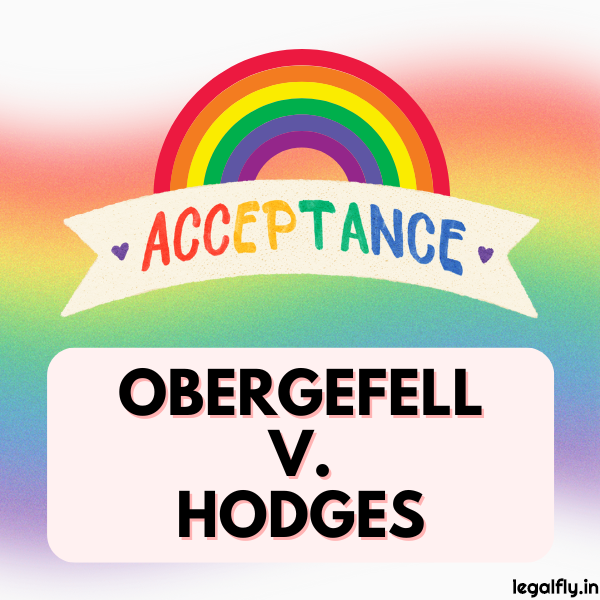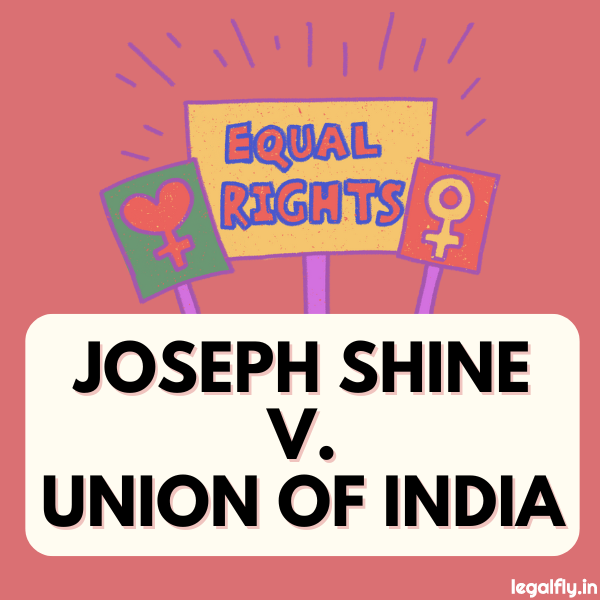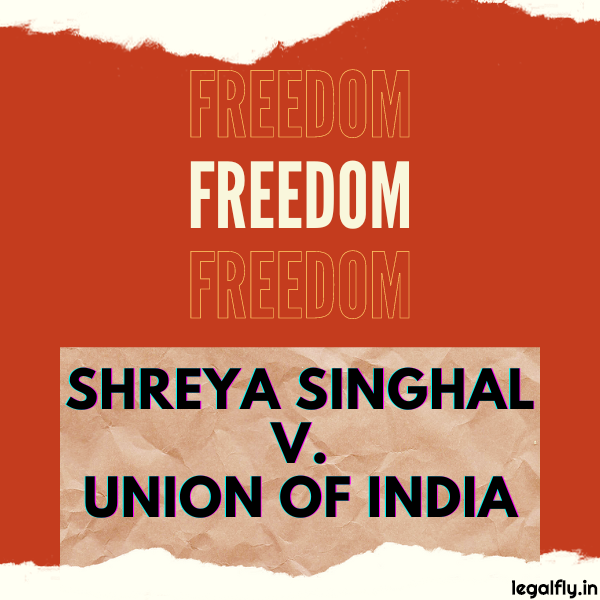Table of Contents
Case Name: Obergefell v. Hodges
Court: Court of the United States
Year: 2015
Citation: 576 U.S. 644
Introduction
The 2015 Supreme Court case Obergefell v. Hodges marked a turning point in American civil rights history. This landmark decision legalised same-sex marriage across the United States, ending years of debate and legal battles.
The Court ruled that the Fourteenth Amendment requires states to license and recognise same-sex marriages, affirming marriage as a fundamental right for all couples regardless of gender. The 5-4 decision, written by Justice Anthony Kennedy, analysed the history and purpose of marriage as a constitutional liberty.
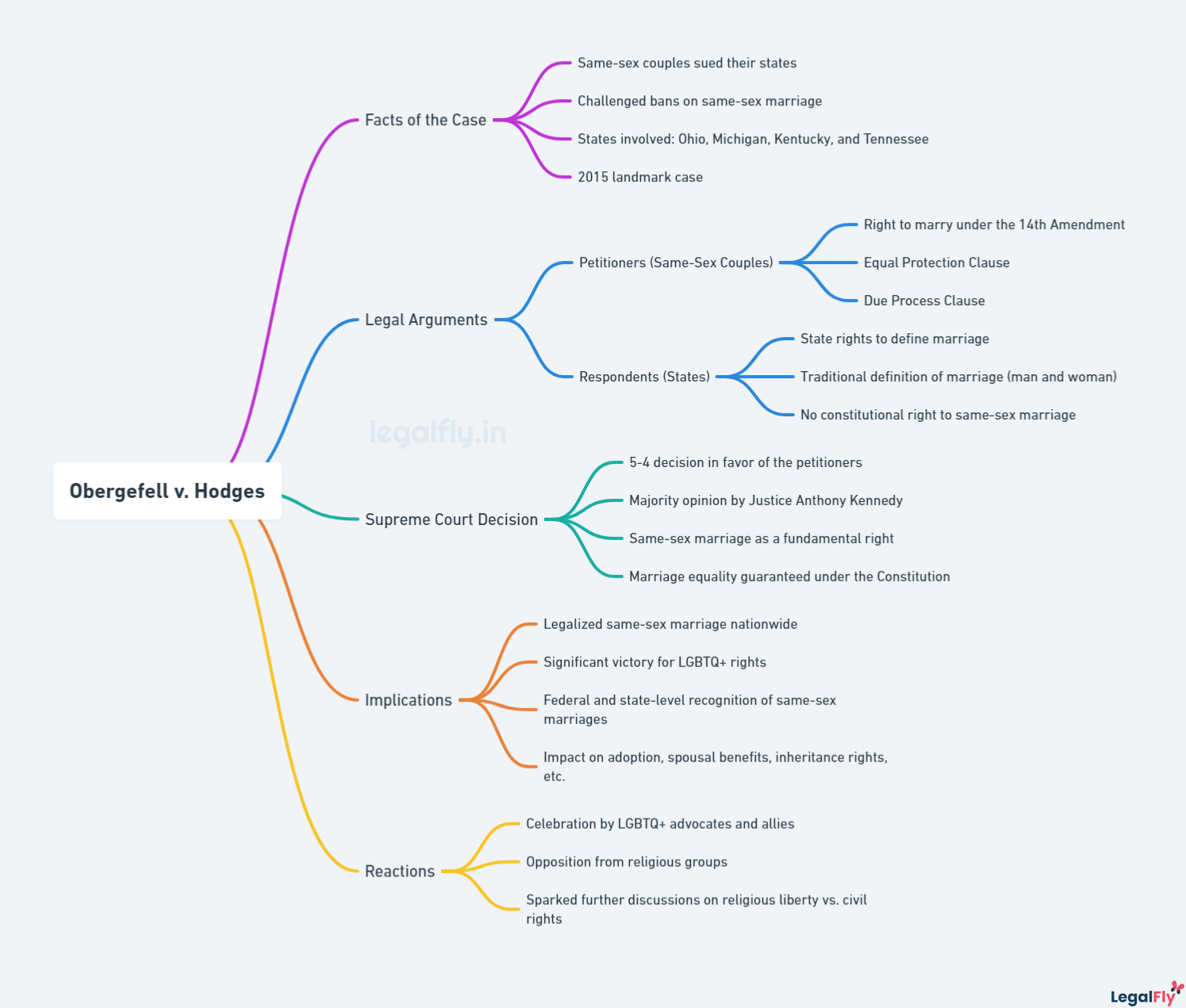
The case had far-reaching effects on American society and law. It granted same-sex couples the same legal rights and protections as heterosexual married couples, including benefits related to taxes, inheritance, and medical decisions. The ruling also sparked ongoing discussions about religious freedom and states’ rights.
Key Takeaways
- The Supreme Court legalised same-sex marriage nationwide in 2015.
- The ruling was based on the Fourteenth Amendment’s guarantees of liberty and equality.
- Obergefell v. Hodges granted same-sex couples the same legal rights as heterosexual married couples.
Historical Background and Precedent Cases
The path to same-sex marriage recognition in the United States involved several states’ key court cases and legislative actions. These events set the stage for the landmark Obergefell v. Hodges ruling.
United States v. Windsor and Its Impact
In 2013, the Supreme Court struck down part of the Defence of Marriage Act in United States v. Windsor. This ruling required the federal government to recognise same-sex marriages performed in states where it was legal.
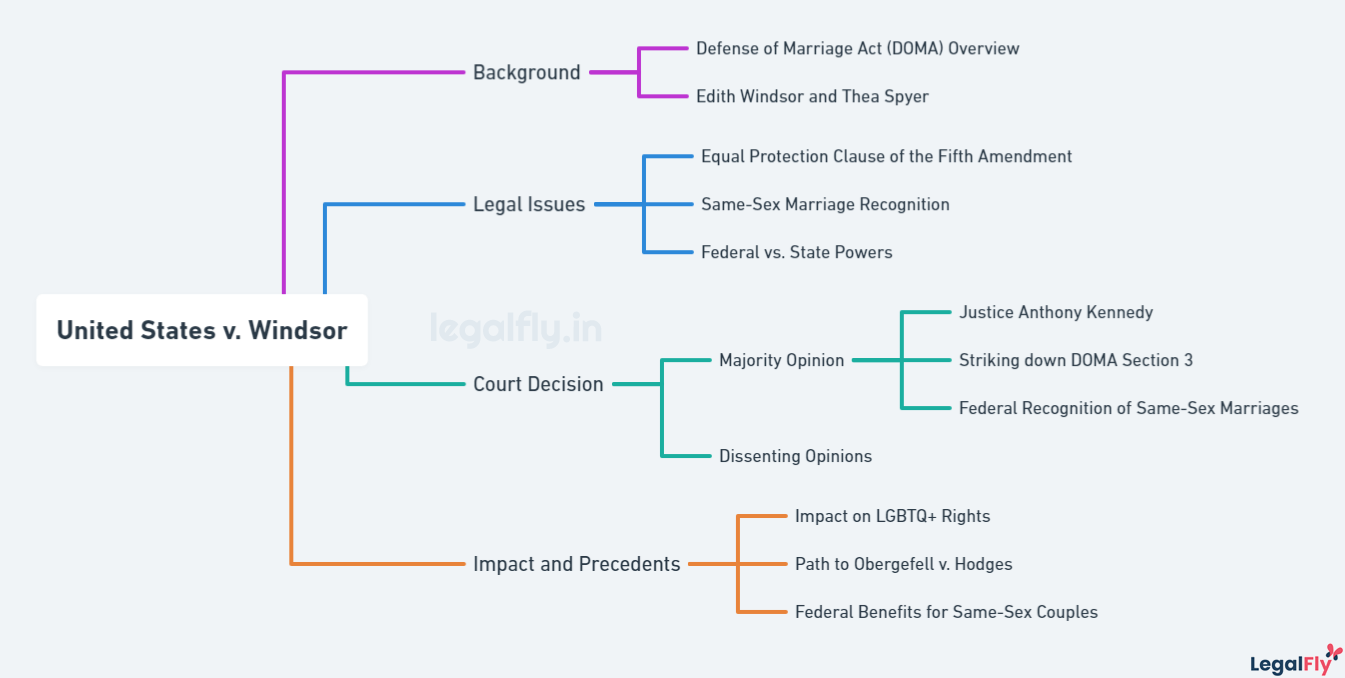
The Windsor decision sparked a wave of legal challenges to same-sex marriage bans across the country. Many lower courts cited Windsor when overturning state bans.
Several states, including California, began allowing same-sex marriages after Windsor. This created a patchwork of laws across the nation, with some states recognising same-sex marriages and others banning them.
From Baker v. Nelson to the Tipping Point
In 1972, the Supreme Court dismissed Baker v. Nelson, a case challenging Minnesota’s refusal to issue a marriage licence to a same-sex couple. This decision stood for decades.

By 2015, societal attitudes had shifted dramatically. Several federal courts began overturning state bans on same-sex marriage.
The tipping point came when the 6th Circuit Court of Appeals upheld bans in Michigan, Ohio, Kentucky, and Tennessee. This created a split with other circuit courts, prompting the Supreme Court to take up the issue.
State Legislation and Constitutional Amendments
Many states passed laws or constitutional amendments banning same-sex marriage in the 1990s and 2000s. By 2004, about 40 states had such bans in place.
Virginia passed a constitutional amendment in 2006 defining marriage as between a man and a woman. Similar amendments were passed in Michigan (2004) and Kentucky (2004).
Some states, like California, saw legal battles over same-sex marriage bans. California voters approved Proposition 8 in 2008, banning same-sex marriage. This led to a series of court challenges.
By 2015, public opinion had shifted. Several states had legalised same-sex marriage through legislation or court rulings, setting the stage for the Obergefell case.
The Case of Obergefell v. Hodges
The landmark Supreme Court case Obergefell v. Hodges challenged same-sex marriage bans in four states. It led to a historic ruling that legalised same-sex marriage across the United States.
Plaintiffs’ Arguments and Challenges
James Obergefell and John Arthur, a same-sex couple from Ohio, filed the initial lawsuit. They wanted Ohio to recognise their Maryland marriage on Arthur’s death certificate.
Other plaintiffs joined from Michigan, Kentucky, and Tennessee. They argued that denying same-sex couples the right to marry violated:
- The Equal Protection Clause
- The Due Process Clause of the 14th Amendment
The plaintiffs highlighted how marriage bans harmed same-sex couples and their children. They stressed the importance of legal recognition for family stability and benefits.
Ohio’s Defence and State Arguments
Ohio and the other states defended their bans on same-sex marriage. They claimed:
- Voters, not courts, should decide marriage laws
- Traditional marriage supports procreation and child-rearing
- States have the right to define marriage
The states argued that changing the definition of marriage could have unforeseen consequences. They stressed the importance of caution in altering such a fundamental institution.
Significant Moments in Oral Arguments
During oral arguments, several key exchanges occurred:
- Justice Kennedy questioned whether marriage bans demeaned same-sex couples
- Chief Justice Roberts raised concerns about changing the traditional definition of marriage
- Justice Alito asked about potential polygamy implications
The plaintiffs’ lawyer stressed the dignity of same-sex relationships, and the states’ representatives emphasised the need for democratic processes in defining marriage.
These arguments set the stage for the Court’s eventual 5-4 decision favouring same-sex marriage rights.
Supreme Court Opinion and Dissents
The Obergefell v. Hodges ruling sparked intense debate among Supreme Court justices. The 5-4 decision highlighted deep divisions on same-sex marriage rights and constitutional interpretation.
Majority Opinion by Justice Kennedy
Justice Anthony Kennedy wrote the majority opinion, focusing on two fundamental principles: individual autonomy and equal dignity. He argued the Due Process Clause protects the fundamental right to marry, which extends to same-sex couples.
Kennedy emphasised four main reasons for protecting same-sex marriage:
- Personal choice in marriage is central to individual autonomy
- Marriage supports a two-person union unlike any other
- Marriage safeguards children and families
- Marriage is a keystone of social order
The ruling concluded that denying same-sex couples the right to marry violates both the Due Process and Equal Protection Clauses of the Fourteenth Amendment.
Dissenting Opinions and Counterarguments
Four justices filed dissenting opinions, each presenting unique arguments. Chief Justice Roberts criticised the majority for overstepping judicial bounds and redefining marriage.
Justice Scalia argued the Court had no authority to decide the issue, calling it a threat to American democracy. Justice Thomas focused on the concept of liberty, asserting that the government cannot bestow dignity.
The dissenters shared concerns about:
- Judicial overreach
- Disregard for democratic processes
- Potential infringement on religious liberties
They argued that marriage definitions should be left to individual states and voters through the legislative process.
Implications and Consequences
The Obergefell v. Hodges ruling had far-reaching effects on marriage equality, society, and state laws. It sparked changes in legal rights and sparked ongoing debates about same-sex marriage.
Legal Impact on Marriage Equality
The ruling legalised same-sex marriage across all 50 U.S. states. This meant that same-sex couples could now marry and receive the same legal benefits as opposite-sex couples.
State bans on same-sex marriage were struck down. Marriage licences had to be issued to same-sex couples in every state, and the decision also required states to recognise same-sex marriages performed in other states.
This had a significant impact on families. Same-sex couples could now adopt children jointly in all states. They gained rights related to medical decisions, inheritance, and taxes.
Societal Responses and Continuing Debates
The ruling was met with mixed reactions. Supporters celebrated it as a victory for equal rights, while critics argued it went against traditional marriage values.
Some religious groups expressed concerns about potential conflicts with their beliefs. Debates arose about balancing religious freedoms with marriage equality.
Public opinion on same-sex marriage continued to shift. More people accepted it over time, but disagreements remained in some communities.
Effect on Related State Laws and Policies
The ruling led to changes in many state laws. Policies on adoption, foster care, and family leave had to be updated to include same-sex couples.
Some states faced challenges in adjusting their systems. They needed to update forms, procedures, and training for staff.
The decision also affected laws beyond marriage. It raised questions about other LGBT rights, such as workplace protections and healthcare access.
States had to review their anti-discrimination laws. Some expanded protections based on sexual orientation and gender identity.
Analysis and Conclusion
The Obergefell v. Hodges ruling sparked ongoing legal discussions and interpretations. Courts and scholars have grappled with its implications for constitutional rights and the scope of marriage equality.
Subsequent Case Law and Interpretations
Lower courts have applied the Obergefell decision to various cases involving same-sex couples’ rights. These rulings have addressed issues like adoption, parental rights, and employee benefits.
The U.S. Supreme Court expanded on Obergefell in later cases. It struck down laws that treated same-sex married couples differently from opposite-sex couples in areas like birth certificates and inheritance.
Some states faced legal challenges when trying to limit the ruling’s impact. Courts generally rejected attempts to restrict same-sex marriage rights or deny related benefits.
Reflections on Constitutional Law and Rights
Legal experts have debated Obergefell’s impact on constitutional interpretation. The ruling relied on both the Due Process and Equal Protection Clauses of the Fourteenth Amendment.
This approach raised questions about the interplay between liberty and equality in fundamental rights cases. Scholars have examined how the decision might affect other areas of civil rights law.
The ruling also sparked discussions about the role of the judiciary in recognising new rights. Critics argued it overstepped the Court’s authority, while supporters saw it as a proper application of constitutional principles.
These debates continue to shape views on the proper scope of judicial power and the evolving nature of constitutional rights in the U.K. legal system.
Frequently Asked Questions
What was the Obergefell v. Hodges case about?
Obergefell v. Hodges was a landmark 2015 Supreme Court case that addressed same-sex marriage rights in the United States. The case consolidated lawsuits from multiple states challenging bans on same-sex marriage. It ultimately decided whether the Fourteenth Amendment requires states to license and recognize same-sex marriages.
What was the Supreme Court’s ruling in Obergefell v. Hodges?
In a 5-4 decision, the Supreme Court ruled that state bans on same-sex marriage were unconstitutional. The Court held that the Fourteenth Amendment requires states to license marriages between same-sex couples and to recognize same-sex marriages performed in other states. This effectively legalized same-sex marriage nationwide.
How did Obergefell v. Hodges impact LGBTQ+ rights in America?
Obergefell v. Hodges had far-reaching implications for LGBTQ+ rights. Beyond legalizing same-sex marriage, it granted same-sex couples access to numerous legal benefits, including adoption rights, employment and social security benefits, healthcare decision-making, and inheritance rights. The decision marked a significant milestone in the fight for LGBTQ+ equality in the United States.

